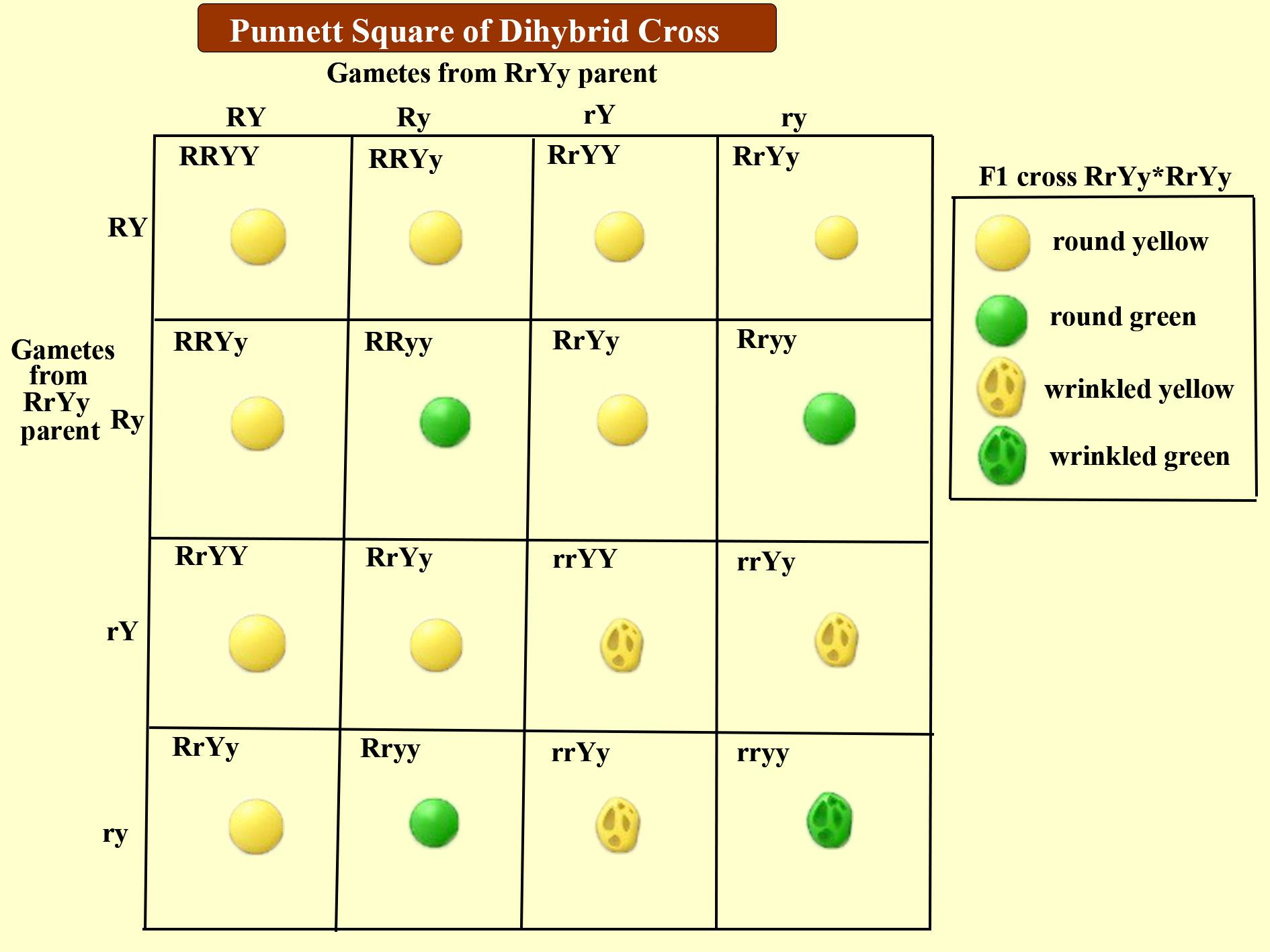
The cross of AaBb X AaBb produces offspring with phenotype, the possible number is
(a)2
(b)4
(c)16
(d)25
(e)50
Answer
485.1k+ views
Hint: The cross of AaBb X AaBb produces offspring with phenotype, the possible number is adequate to the square of the number of gametes formed from the one parent cross of AaBb X AaBb.
Complete answer:
The inheritance of dihybrid traits are often calculated consistent with the subsequent steps:
Step 1: Designate characters to represent the alleles
Capital letter for the dominant allele, small letter for the recessive allele
Step 2: Write down the genotype and phenotype of the oldsters (P generation)
Always pair alleles from an equivalent gene and always write capitals first (e.g. AaBb, not ABab)
Step 3: Write down all possible gamete combinations for both parents
Use the FOIL method (or the claw) to spot all possible combinations
Step 4: Use a Punnett square to figure out potential genotypes of offspring
Only include the various gamete combinations for every parent (e.g. AaBB has two combinations = AB and aB)
Step 5: Write out the phenotype ratios of possible offspring
Phenotypic ratios show mathematical probabilities only and should not necessarily show actual offspring ratios.
Mendel observed that the second filial progeny of his hybridization had a 9:3:3:1 ratio and produced nine plants with round and yellow seeds, three plants with round and green seeds, three plants with wrinkled and yellow seeds and one plant with wrinkled and green seeds. From his experiment, Mendel observed that the pairs of traits within the parental generation sorted independently from each other, from one generation to subsequent.
So, the correct answer is, ‘16.’
Note: -On the basis of results of Dihybrid cross, Mendel proposed his second law of inheritance and is called the law of Independent Assortment of factors. This law states that in a hybrid union for two or many traits, the different traits are inherited independently of each other as genes for two characteristics are inherited independently.
-The easiest method to figure out potential gamete combinations during hybridization is to use the FOIL method:
FOIL = First Outside Inside Last

Complete answer:
The inheritance of dihybrid traits are often calculated consistent with the subsequent steps:
Step 1: Designate characters to represent the alleles
Capital letter for the dominant allele, small letter for the recessive allele
Step 2: Write down the genotype and phenotype of the oldsters (P generation)
Always pair alleles from an equivalent gene and always write capitals first (e.g. AaBb, not ABab)
Step 3: Write down all possible gamete combinations for both parents
Use the FOIL method (or the claw) to spot all possible combinations
Step 4: Use a Punnett square to figure out potential genotypes of offspring
Only include the various gamete combinations for every parent (e.g. AaBB has two combinations = AB and aB)
Step 5: Write out the phenotype ratios of possible offspring
Phenotypic ratios show mathematical probabilities only and should not necessarily show actual offspring ratios.
Mendel observed that the second filial progeny of his hybridization had a 9:3:3:1 ratio and produced nine plants with round and yellow seeds, three plants with round and green seeds, three plants with wrinkled and yellow seeds and one plant with wrinkled and green seeds. From his experiment, Mendel observed that the pairs of traits within the parental generation sorted independently from each other, from one generation to subsequent.
So, the correct answer is, ‘16.’
Note: -On the basis of results of Dihybrid cross, Mendel proposed his second law of inheritance and is called the law of Independent Assortment of factors. This law states that in a hybrid union for two or many traits, the different traits are inherited independently of each other as genes for two characteristics are inherited independently.
-The easiest method to figure out potential gamete combinations during hybridization is to use the FOIL method:
FOIL = First Outside Inside Last

Recently Updated Pages
Express the following as a fraction and simplify a class 7 maths CBSE

The length and width of a rectangle are in ratio of class 7 maths CBSE

The ratio of the income to the expenditure of a family class 7 maths CBSE

How do you write 025 million in scientific notatio class 7 maths CBSE

How do you convert 295 meters per second to kilometers class 7 maths CBSE

Write the following in Roman numerals 25819 class 7 maths CBSE

Trending doubts
Give 10 examples of unisexual and bisexual flowers

Draw a labelled sketch of the human eye class 12 physics CBSE

Differentiate between homogeneous and heterogeneous class 12 chemistry CBSE

Differentiate between insitu conservation and exsitu class 12 biology CBSE

What are the major means of transport Explain each class 12 social science CBSE

Franz thinks Will they make them sing in German even class 12 english CBSE




